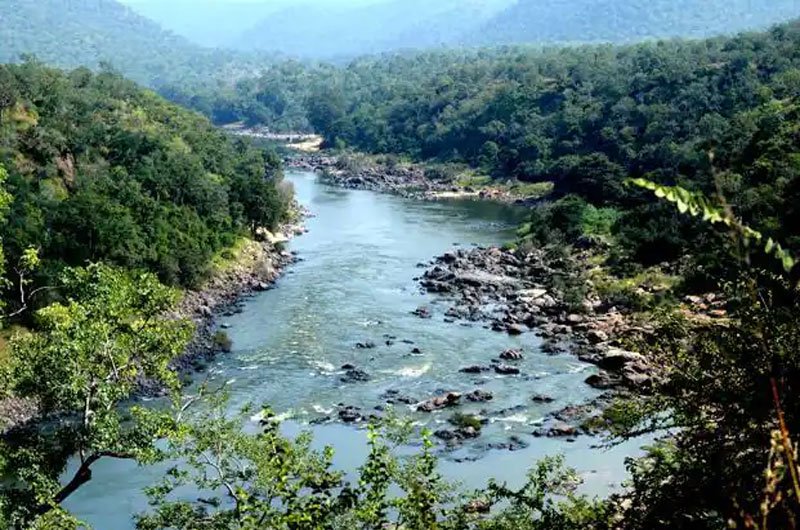
The Sacred Cauvery River: A Journey Through Southern India’s Lifeline
The Cauvery River, often referred to as the “Ganges of the South,” is one of the most significant and revered rivers in India. Flowing through the states of Karnataka and Tamil Nadu, the Cauvery River is not just a lifeline for millions but also a cultural and spiritual symbol. This detailed guide explores the Cauvery River, highlighting its tourism specialties, local attractions, history, ideal visiting periods, and practical travel tips.
Introduction
The Cauvery River, originating from the Brahmagiri Hill in the Western Ghats of Karnataka, traverses a distance of over 800 kilometers before emptying into the Bay of Bengal. Known for its picturesque landscapes, rich cultural heritage, and spiritual significance, the Cauvery River attracts tourists, pilgrims, and nature enthusiasts alike. This guide provides a comprehensive overview of the various facets of the Cauvery River.
Geographic Location and Course
Origin and Path
- Origin: The Cauvery River originates at Talakaveri in the Brahmagiri Hill, located in the Kodagu district of Karnataka.
- Course: The river flows southeast through Karnataka and Tamil Nadu, passing through several towns and cities before reaching the Bay of Bengal.
- Confluence: The Cauvery River ultimately merges with the Bay of Bengal near Poompuhar in Tamil Nadu.
Ecological Significance
- Biodiversity: The river basin supports diverse ecosystems, including forests, wetlands, and agricultural lands, home to various species of flora and fauna.
- Economic Impact: The Cauvery River is crucial for irrigation, drinking water supply, and supporting local economies through agriculture, fisheries, and hydroelectric power generation.
Tourism Specialty
Scenic Beauty
- Picturesque Landscapes: The Cauvery River offers stunning views of lush green valleys, rolling hills, and serene waters, making it a paradise for nature lovers and photographers.
- Waterfalls and Rapids: The river is dotted with several waterfalls and rapids, such as Shivanasamudra Falls and Hogenakkal Falls, offering breathtaking vistas and opportunities for adventure activities.
Adventure and Activities
- Water Sports: The river is ideal for various water sports, including rafting, kayaking, and fishing.
- Trekking: The surrounding hills and forests provide excellent trekking trails, offering panoramic views of the river and the landscape.
Cultural Experiences
- Festivals: Various cultural festivals and religious events are held along the river, showcasing the region’s vibrant traditions and heritage.
- Local Crafts: The riverine communities are known for their traditional crafts, including weaving, pottery, and metalwork, which visitors can explore and purchase.
Locality and Major Cities
Key Cities Along the Cauvery
- Mysore: A major city in Karnataka, Mysore is known for its historical significance, palaces, and vibrant cultural scene.
- Srirangapatna: Located in Karnataka, Srirangapatna is an island town with historical and cultural attractions, including the Ranganathaswamy Temple and the Tipu Sultan’s Summer Palace.
- Tiruchirappalli: Situated in Tamil Nadu, Tiruchirappalli is known for its historical landmarks, including the Rockfort Temple and the Srirangam Temple.
Nearby Tourist Spots
- Talakaveri: The origin of the Cauvery River, Talakaveri is a revered pilgrimage site located in the Brahmagiri Hill, offering scenic views and spiritual solace.
- Bhagamandala: Located near Talakaveri, Bhagamandala is a sacred confluence of three rivers (Cauvery, Kannike, and Sujyoti) and is known for its ancient temple.
- Coorg: Known as the “Scotland of India,” Coorg offers lush coffee plantations, scenic landscapes, and various adventure activities.
History of the Cauvery River
Ancient and Medieval Significance
- Historical References: The Cauvery River has been mentioned in ancient texts and records, highlighting its importance in the region’s history and culture.
- Medieval Period: The river played a crucial role during the medieval period, serving as a natural defense and supporting agriculture and trade.
Colonial and Modern History
- British Era: During British rule, the river was harnessed for irrigation and transportation, significantly impacting the local economy.
- Post-Independence: After India’s independence, several dams and irrigation projects were constructed on the Cauvery River, providing water for irrigation, hydroelectric power, and drinking water, further enhancing the river’s importance.
Best Time to Visit
Ideal Seasons
- Winter (October to February): The weather is cool and pleasant, making it the best time to visit for outdoor activities and sightseeing.
- Monsoon (June to September): The river experiences increased flow during the monsoon season, offering lush green landscapes and a unique experience of the river in full spate. However, travel might be challenging due to heavy rains.
- Summer (March to May): While the weather can be hot and humid, early mornings and late evenings are still enjoyable for river activities.
Special Events
- Cauvery Maha Pushkaram: Celebrated every 12 years, this festival features rituals and cultural performances along the banks of the Cauvery River.
- Diwali: This festival is widely celebrated along the Cauvery River, with elaborate processions and rituals, reflecting the region’s rich cultural heritage.
Nearby Restaurants and Hotels
Restaurants
- RasaDhatu, Mysore: A popular restaurant offering a variety of local and international dishes in a lively setting.
- Vinayaka Mylari, Mysore: Known for its delicious South Indian cuisine, this restaurant provides a comfortable dining experience.
- Shree Sangeethas, Tiruchirappalli: This restaurant offers a range of vegetarian dishes, providing a pleasant dining experience.
Hotels
- Radisson Blu Plaza Hotel, Mysore: A luxurious hotel offering well-appointed rooms, excellent dining options, and proximity to major attractions in Mysore.
- Royal Orchid Brindavan Garden Palace & Spa, Mysore: A heritage hotel with well-furnished rooms, a swimming pool, and dining facilities, ideal for both leisure and business travelers.
- SRM Hotel, Tiruchirappalli: A comfortable hotel offering well-furnished rooms, a restaurant, and easy access to the city’s attractions.
Conclusion
The Cauvery River, with its blend of natural beauty, cultural richness, and historical significance, offers a unique and enriching experience for travelers exploring southern India. From its scenic landscapes and vibrant festivals to its historical landmarks and modern attractions, the Cauvery River promises a memorable journey through one of India’s most captivating regions. Whether you are seeking adventure, cultural insights, or a tranquil escape, the Cauvery River has something to offer for every traveler.
